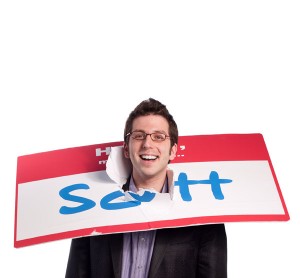My grandfather has a knack for making artifacts.
When he was a kid growing up in the thirties, he found a poem crumbled up in his father’s roll top desk. The passage talked about how to live a good life, be a person of character, stuff like that.
But since the poem had such an impact on his life, he kept it for the next fifteen years. And when he started a family of his own, he turned that anonymous piece of writing into a bronze plaque for all of his children, grandchildren and great grandchildren.
Eighty years later, that poem still spurs conversations in each of our homes. We not only show it to everybody, we tell them the story behind it. We have conversations around the ideas in the poem. And we think about how they apply to our lives today.
That’s our artifact.
What’s yours?
The word itself means, “a skillfully made object.”
But it’s more than that. An artifact is a strategically made social object, too.
Something people can come back to. Something that’s a currency for conversation and collaboration. Something that sets the standard for everyone around you. Something that becomes a canvas for sharing ideas and making observations and asking questions. Something that serves as a platform for expanding people’s abilities. Something that reflects your brand’s human purpose. Something that holds up a mirror that demands people look at themselves.
Want to create one for your organization? Consider these ideas:
Artifacts start with a story. Or a process. Or a system. Or a framework. What’s your unique approach to solving problems or telling stories or building technology or doing business? That’s the content of your artifact.
Artifacts continue with a structure. Make your story visually compelling. Simple enough that an audience could digest it on their own, but provocative enough that they would seek you out to learn more.
Artifacts extend with stuff. It’s not an artifact if you can’t hold in your hands and smell it and touch it and share it. People are yearning for texture. No memorialization, no mesmerization. Pixels are fine, but tactile is divine.
Artifacts perpetuate with social. The goal is to create a verbal incident. It’s not about the artifact, but the conversation around it. It’s a sharing device that allows people to connect with each other.
Looking back, my grandfather was right.
Artifacts matter.
They signal the collective spirit of a culture. They help create an environment worth passing on. And they engage the people living and breathing in that world, day in and day out.
And there isn’t a team, company, department, brand or organization in this world that couldn’t be producing and promoting their own.

